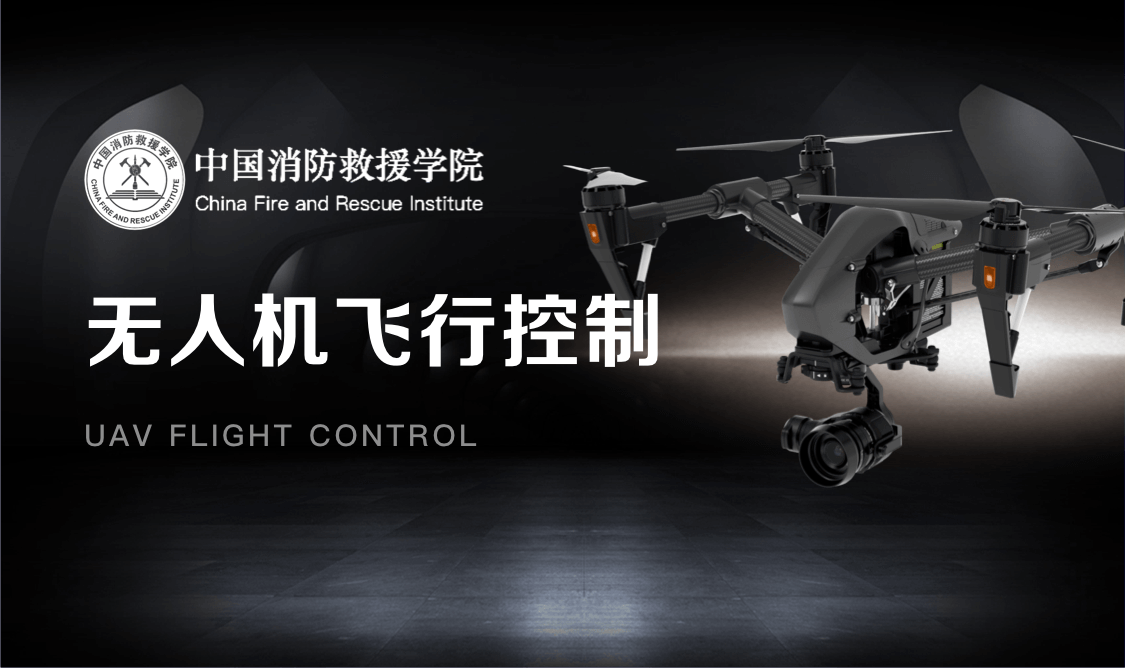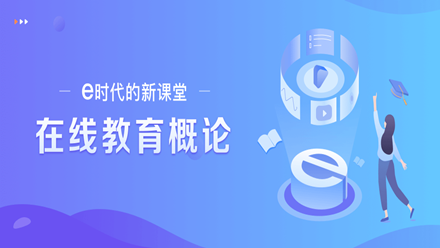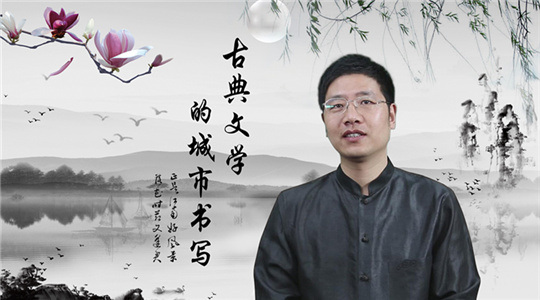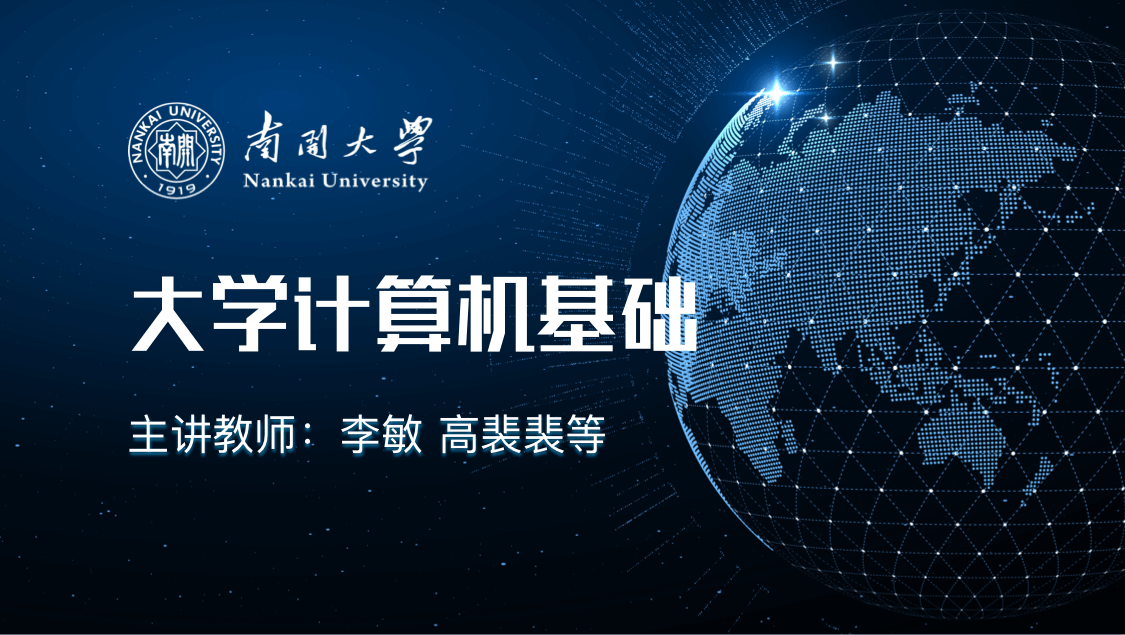
当前课程知识点:e时代的新课堂——在线教育概论 > 第一章 解读在线教育 > 1.2.3在线教育的五要素模型 > 1.2.3在线教育的五要素模型
综上所述
To sum everything up,
我们可以看到
we can see that
在线教育实际上是随着
online education
互联网这种技术的出现
is actually a new form of education
和它的逐步地推广和扩展开来
emerged at a time when Internet technology
出现了一种新的教育形态
was developing and expanding its borders.
那当互联网出现之后
Shortly after the birth of the Internet,
人们很早就开始尝试
people began to try to
采用这种新的技术
apply this new technology to
去提供教育和教学的这种方式
teaching and educational services.
所以在从1981年
Since 1981,
世界上出现第一门在线课程开始
when the first online course in the world appeared,
人类创制了很多不同的词来称呼
people have created many different terms
这样的一种新型的教育形态
for this new form of education.
比如最早中国在1999年
For example, when China first started
启动的在线教育的最早的探索
its efforts on online education in 1999,
我们把它叫做什么呢
what did we call it?
叫做现代远程教育
We called it "modern remote education".
那么还有人把它称为叫网络教育
Others called it network education,
什么在线教育 在线学习 在线教学
online education, online learning, online teaching,
基于web的教学
web-based instruction,
基于web的学习 基于web的培训
web-based learning, web-based training,
e-learning u-learning m-learning
e-learning, u-learning, m-learning,
还有像慕课
MOOC,
还有SPOC MPOC 等
SPOC, MPOC, and so forth.
所以这样总的来说
While in general,
这些词它指的其实都是同一件事
these terms refer to the same thing,
其实就是在互联网
i.e.,
这样一个全新的生态环境下
the new model of education
出现了一种新型的
appeared in the Internet ecosystem
教育的未来的这个模型和趋势
and its trend in the future.
最后为了让大家对在线教育
Finally, to give you a clear understanding
有一个比较清晰的了解
of online education,
我们把基于历史的
we summarized
这样一个发展过程
its historical development
提炼出一个模型来帮大家来解读
and extracted a model to help you interpret
或者是理解什么是在线教育
or understand what online education is.
这个模型就是我们在这儿
It is
给大家展示的
what I present here,
是一个五要素的模型
a five-element model.
这五要素包括老师和学生
Teachers and students are included in the five elements,
这两个我们就不用解读了
but we don't have to further explain them here.
其中第三个要素叫教学资 源
The third element is called instructional resources.
你看从简单的刚才的历史梳理
You see, after running through its history,
我们会发现教育的这个实施过程
we found that in the process of education,
第一个非常重要的
the most important issue is
是我们怎么样表达
how to express and preserve
和保存人类曾经积累形成的
the wisdom and knowledge
这样一些智慧和知识
accumulated by human beings.
所以它的表达和传播的形态
The forms of expression and transmission
就是我们这特别关注的教育资源
are the instructional resources that we pay special attention to.
那么在口传时代
In the era of oral tradition,
教育的这种
teaching contents were largely
内容的表达和传播形态
expressed and transmitted
最重要的就是这种口头的
through poem chanting
这种吟诵诗歌或者口头的讲授
and oral teaching,
像苏格拉底跟他的学生之间的
like the dialogue
这种口头对话
between Socrates and his students.
所以这是第一类
So, this was the first kind of the instructional resources.
教学资源它可以是口头的
Instructional resources
这样一种讲授
can involve oral teachings.
那么这种讲授方式
Actually, this method of teaching
其实一直持续到今天
has survived to this day.
在大学的课堂上
In today's college classrooms,
我们主要的还是在采用口头语言
we still use oral language
作为一种非常重要的
as a major method
内容的提供方式
for providing content.
那么之后在有了这个
Since the emergence
手工书写和印刷技术之后
of handwriting and printing technology,
我们大量的知识
abundant information
我们会采用纸质的这样一种形态
has been expressed, preserved and transmitted
去表达 去保留 去传播
in the form of printing.
所以这是第二种
This is the second kind of the instructional resources.
那么随着互联网的出现
Then, with the arrival of the Internet,
我们会发现今天大量的资源
we'll find that a lot of resources
它可能是以这种
may be transmitted in new forms,
比如音频
like audio recordings.
像这两年中国
For example, in recent years,
这个知识付费的这种探索里面
China has been exploring the field of paid knowledge.
很多的产品
Many products,
包括像喜马拉雅 得到 等等
including Ximalaya FM and iGet,
它都是以音频的方式
use audio recordings
作为一种知识的主要的
as a major method
表达和传递的方式
to express and pass on knowledge.
所以音视频也成为一种
So, audio recordings and videos have become
越来越重要的
an increasingly important way
一种提供内容的方式
of providing content.
当然除此之外
Additionally,
还有我们今天的
today, we have
你比如说像人类基因测序
a gene database
形成的那个基因数据库
of DNA sequencing.
还有像未来的甚至包括
In the future,
像VR的这样一种新型教育形态
we may see VR and other emergent forms of education.
还有包括像现在
Currently,
有一些这种游戏化 的
we also have
这种内容的组织方式
gamification content.
所以这是第三个重要的要素
This is the third important element.
这个要素你会看到
Speaking of this element,
到互联网出现之后
you'll see that after the birth of the Internet,
其实我们大量的
a large amount of information,
无论原来是在纸上保留的
whether before was preserved on paper
还是通过口语保留的
or passed on orally,
现在全部有一个数字化的趋势
tends to be digitized.
这些资源大量的
In the future,
可能未来无论是它的传播和访问
we, as readers, may pass on and access
我们作为一个读者访问的方式
these vast resources
都会变成数字化
in a digital format.
所以这个其实是我们解读
This is really a significant element
在线教育的一个非常重要的要素
for interpreting online education.
第四个要素就是叫教育场 景
The fourth element is called the educational setting.
这就可以回应到我们前面说的
It echoes the following saying by Mr. Chen Yinke:
陈一介先生说的未有传人也枉然
"We cannot make achievements if no one can read them."
就是对于知识我们还是需要
Knowledge is acquired
有个讨论和解读的过程
through the process of discussion and interpretation.
那这个讨论和解读
But this process should be done in a setting
需要一个交流的场景
where we can communicate.
在传统的课堂教学的这种场景下
With traditional classroom teaching,
我们在课堂里面
our setting is the classroom,
老师和学生
in which teacher and students
对于关于一个知识的讨论解释
discuss or explain certain knowledge points,
或者我们说答疑反馈
ask and answer questions
这样一个场景
and offer feedback.
我们主要是在一个
Everything happens
全部是面对面的
in this setting.
这么一个环境下发生的
We are all face to face.
在我从传播学的角度看
From the perspective of communication studies,
我觉得传统的课堂
I think the traditional classroom
它是一种什么样的场景
is such a setting:
它其实是要求我们所有的人
all people concerned,
老师 学生 旁听的人也一样
including the teacher, students and observers,
所有的人要在同一个时间
are required to be at the same spot
出现在同一个地点
at the same time.
所以这个其实我们可以把它
We can call it
称为是传统课堂
a traditional classroom.
今天我们说的E时代的新课堂
But now we have a new classroom in the E-era.
那E时代的新课堂
It mainly refers to
主要指的是后面的两种
the latter two forms.
你像今天
You know,
我们有大量的那种conference
we have a lot of conferences today,
就国际会议
like international conferences
或者是一些新型的创业公司
or some new types of startups.
他们的教学其实不是在传统课堂
They don't teach students in the traditional classroom.
而是通过什么样的系统
Then what kind of systems do they use
来支撑师生之间
to ensure the exchange and communication
发生这种对话和交流关系
between teachers and students?
通过这种音频会议系统
They use audio conference
或者是视频会议系统
or video conference.
比如说我们国家这两年
For example, in recent years,
一个非常有名的
we've got a very famous startup in China
一个创业项目叫VIPKID
called VIPKID.
它实际上就是通过这种
In fact, VIPKID utilizes
同步的视频课堂的形式
synchronized video lectures,
让美国的老师在美国家里
allowing US teachers
为中国孩子
to teach Chinese children
他也在中国家里进行这种英语的
oral English one-on-one,
一对一的口语教学
while both sides at their own homes.
所以这个
So, this is
其实就是我们互联网时代出现的
a new form of classroom
就E时代的一种新的课堂的
that has arisen
一种新课堂的形态
in the Internet era.
那么这种形态它的特点是什么
What are the characteristics of this form?
它的特点是
The characteristics lie in the fact that
老师和学生可以在地理上
the teacher and students
处于不同的位置
can be in different geographical locations.
但是我们需要在同一时间
But they have to
登录这样一个平台
log into a platform at the same time.
我们才能发生这种面对面的交流
In this way, face-to-face communication can happen.
那么第三种
The third form of new classroom
就是类似这两年出现的
appeared in the recent several years.
在高等教育领域发展非常快的
It's been rapidly developing in the field of higher education.
这种慕课的这种课堂形态
This form of classroom is MOOC.
慕课的课堂形态
If we use a model
如果用传播学的这样一个模型
in communication studies
来解读
to interpret MOOC,
我们可以把它看作是
we may see it as a method
既可以在不同地点
that doesn't require both parties
即可以在不同地点
to stay at the same spot
同时也可以在不同时间
or go online at the same time.
就你比如说老师和学生
That is to say,
可以以异步的方式
the teacher and students
进行这样一种交流交互
can communicate asynchronously.
所以这两个维度我觉得
Therefore, I think these two dimensions
都可以是我们今天
play an important role
在考量什么是在线教育
in our interpretation
以及包括我们认知今天的
of online education
E时代新课堂的
and our understanding
非常重要的一个元素
of the new classroom in the E-era.
第四个元素
This is the fourth element.
然后中间的这个圆形的这个元素
The element in the center ring
我觉得它是任何时代
is the core and soul of education
它都是教育的核心和灵魂
all the time.
这个核心和灵魂是什么
So, what is it?
我把它称为叫教学活动设计
I call it the Instructional Activity Design.
所以按照我们提的
Based on the five-element model
这个五要素的模式
we have proposed,
我们最后来给在线教育
I'll give a summary
做一个这样的总结性的一个陈述
of online education in the end.
在线教育就是教学资源的数字化
Online education is the digitization of instructional resources.
教学交互从原来传统课堂
The location where instructional interactions take place
到E时代新课堂的这样一个
changes from traditional classrooms
就是变化的过程
to the new classroom in the E-era.
以及我们大量的这种师生
Instructional interactions
和生生之间的教学交互
between a large number of teachers and students
都可能是通过在线的场景
and among students themselves
来完成的
may all take place online.
这样一种全新的教育形态
This new form of education
这就是我们这门课程
is exactly the online education
所关注的在线教育
that we are discussing in this course.
-混合式教学该怎么做?与清华老师一起聊聊
-看清华老师如何进行大班混合式教学
--Video
-如何做好混合式课堂的互动
--Video
-与清华大学老师聊聊慕课独特的教学设计
-“挑战60s”授课短视频大赛
--Video
-与清华大学老师聊聊慕课的制作与运营
--Video
-1.1在线教育发展现状
--html
-1.1.1在线教育带来了e时代的新课堂
-1.1.2师生说
--1.1.2师生说
-1.1.3我国在线教育的特点
-1.2什么是在线教育
--html
-1.2.1概念解析
-1.2.2教育的技术发展史
-1.2.3在线教育的五要素模型
-1.3在线教育对教师的机遇与挑战
--html
-1.3.1机遇篇
--1.3.1机遇篇
-1.3.2挑战篇
--1.3.2挑战篇
-1.4在线教育发展的历史
--html
-1.4.1二十世纪的发展
-1.4.2二十一世纪的发展
-1.4.3在线课程三要素
-1.4.4虚拟教育组织
-1.5课程内部体系和外部关系
-第一章 解读在线教育--单元习题
-讨论题
-2.1数字时代带来教育变革
-2.2在线教育更适应学生的学习需求
--html
-2.2.1教育需求的发展
-2.2.2学习风格与学习类型
-2.2.3多模态数据分析学生学习行为与需求
-2.2.4教育目标
-2.2.5拓展学习时空,促进深度学习
-2.2.6自主学习系统的案例分享
-2.3在线教育帮助教师成长
-2.4学校和国家为什么要做在线教育
-单元习题--作业
-3.1高等学校在线教育发展
-3.1.1学校现状
-3.1.2平台与联盟
-3.2不同类型的教师都能得益于混合式教学
-3.3混合式教学的好处
-3.3.1当前的教学问题
-3.3.2教师和学生的收益
-3.4混合式教学的关键细节与常见误解
-3.4.1关键细节一
-3.4.2关键细节二
-3.4.3关键细节三
-3.4.4误解篇一
-3.4.5误解篇二
-3.5智慧教学工具的发展
-3.5.1综述篇
--3.5.1综述篇
-3.5.2雨课堂的诞生
-3.5.3雨课堂的功能
-3.5.4课堂教学需要雨课堂
-3.5.5雨课堂解决面授时间紧张的问题
-3.5.6雨课堂解决课前课中课后的学习效果问题
-3.5.7课前课中课后雨课件设计要点
-第三章 高校在线教育进行时--单元习题
-讨论题
-讨论题
-4.1教育实践的展望(一) 教育创新
-4.2教育实践的创新(二) 教育技术与决策
-4.3教育理论的热点趋势
-第四章 在线教育的未来--单元习题
-讨论题
-5.1邓俊辉老师《数据结构》与《计算几何》教学案例
--html
-5.1.1慕课制作与使用心得(一)
-5.1.2慕课制作与使用心得(二)
-5.2张瑜老师《思想道德修养与法律基础》教学案例
--html
-5.2.1教学理念与混合式教学的主要环节
--Video
-5.2.2章节实例
-5.3杨芳老师《大学英语》教学案例
--html
-5.3.1混合式教学设计心得
-5.3.2 University单元教学设计
-5.4于歆杰老师《电路原理》教学案例
--html
-5.4.1小容量班级完全翻转课堂
-5.4.2大容量班级部分翻转课堂
-5.5郑莉老师《C++语言》教学案例 雨课件样例及校内教学心得分享
--Video
-单元习题--作业






